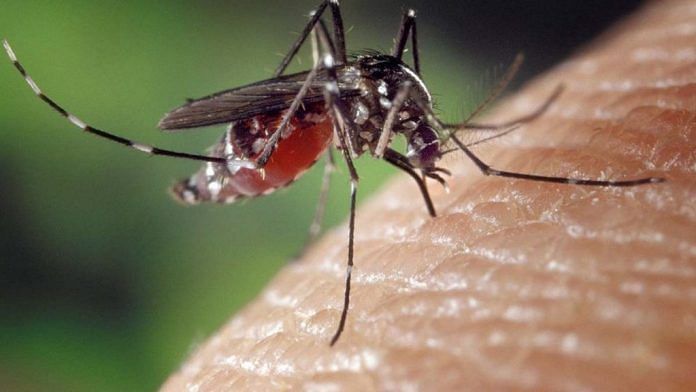Bengaluru: It is known that in regions like India and Africa, malaria can often remain undetected in the body during the non-rainy season, when mosquitoes are unable to breed and carry the disease. While there is no detrimental effect to the human body in most cases during the malarial parasite’s dormancy, symptoms can reappear months later when mosquito population surges during the rains.
New research from Mali, West Africa, into how malarial parasites survive for months without symptoms in an individual, indicates that the deadliest malarial parasite, Plasmodium falciparum, has a distinct genetic mechanism that lets it hide in an infected person’s bloodstream for up to six months without triggering an immune response.
The multinational study — by scientists from Denmark, France, Germany, Mali, Portugal, Sweden, UK and USA — was led by Silvia Portugal of the Max Planck Institute for Infection Biology, Germany.
The findings were published in the journal Nature Medicine Monday.
Also read: How to handle Covid plus dengue, malaria or seasonal flu? Health ministry issues guidelines
Findings from Mali
A person can be infected with malarial parasites at any time of the year. However, the cases of malaria are high during the rainy season when mosquitoes, the vectors for the disease, are abundant and breeding.
Portugal’s team followed 600 people in Mali during 2017 and 2018 to track malarial infection and asymptomatic dormancy. These individuals were aged between 3 months and 45 years.
They found that in the rainy seasons of 2017 and 2018, 386 and 347 people were diagnosed with malaria, respectively, and had accompanying high fever.
In comparison, during the six-month long dry season, only 12 and five cases were diagnosed, respectively. However, the researchers discovered that low levels of malaria were detected in the bodies of up to 80 asymptomatic individuals during the dry seasons.
They also sampled and sequenced the P. falciparum from infected individuals during both seasons.
Falciparum malaria spreads in the human body by multiplying inside red blood cells. Then, it usually releases molecules called variant surface antigens (VSA).
During a symptomatic infection or clinical malaria, VSAs cause infected blood cells to stick to blood vessels in an effort to evade detection by the spleen. The spleen acts as a filter and removes other infected cells in the bloodstream, in a process called splenic clearance.
These antigens are also recognised by the body’s immune system as foreign particles, triggering an immune response.
However, the researchers discovered that during dry seasons, the parasite does not produce VSAs. The lack of antigens, therefore, makes it less likely for infected cells to travel towards the spleen, and as a result they evade detection by the immune system as well. They remain safely in the body in low levels until the rainy season, after which they start to multiply and cause illness in the infected individual.
Also read: Too hot for one mosquito, not so for another — Dengue overtakes malaria in Africa
Plasmodium vivax vs falciparum
There are five species of Plasmodium that can infect humans and cause malaria — P. falciparum, P. malariae, P. vivax, P. ovale and P. knowlesi.
P. vivax and P. ovale are also known to lie dormant in the liver for many months, causing symptoms to reappear months or even years later.
While Plasmodium vivax was the most common source of malaria back in the 1980s, especially in countries like India, the incidence of P. falciparum malaria has increased steadily in the past few decades.
Of the two, vivax causes a milder but recurring form of malaria, while falciparum causes a deadly form of the disease, which is often fatal. Falciparum malaria can also induce liver and kidney failure, and coma.
P. falciparum has also developed resistance to malarial drugs, including chloroquine and sulfadoxine-pyrimethamine (SP), in many parts of India and the world.
Malaria infects over 200 million people annually, and 4,00,000 people succumbed to the disease in 2018.
The new findings have implications for the treatment of malaria, especially by reducing the severity of disease by screening and treating infected people during dry seasons.
Also read: New microbe offers big malaria hope — it saves humans and doesn’t kill mosquitoes either



